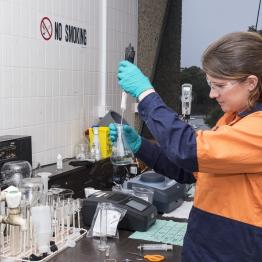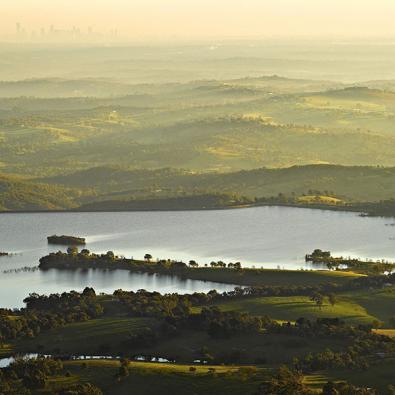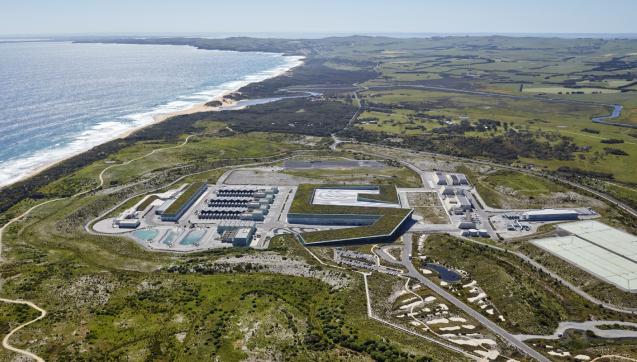To make sure Melbourne has safe drinking water, we treat and disinfect it before it leaves our reservoirs and enters the water supply system.
How we treat water
Our drinking water is sourced from a combination of protected and open water catchments, and the sea. Each of these 'source waters' requires a different type of treatment to ensure it is fit for drinking.
Protected catchments
As the majority of Melbourne's water comes from protected catchments and only needs to be disinfected, it is treated at several smaller plants:
- three smaller membrane filtration plants supplying Healesville and Yarra Glen
- six UV disinfection plants
- chlorination plants located at all major water treatment plants.
Open catchments
We operate two large treatment plants, Winneke and Tarago, which treat water from open catchments.
The full treatment process has additional steps to filter out impurities before water is disinfected. These are listed below, with further details in the Water Quality Annual Report:
- Coagulation
Chemicals — usually liquid aluminium sulphate (alum) — are added to help bacteria and small particles stick together, forming larger particles. - Clarification or floatation
Particles are made to sink or float to separate them from the water, allowing them to be easily removed. Depending on the treatment plant, this stage uses mechanical settling basins, called clarifiers; or diffusers, which create fine bubbles that stick to particles to make them float. -
Filtration
Filters or membranes remove most of the remaining particles as water passes through them. Types of filters include gravity media filters with layers of sand, and membrane filters with billions of microscopic pores. - Disinfection
Chlorine, chloramine (chlorine and ammonia) or ultraviolet light destroy any disease-causing bacteria. The amount of chlorine added varies, but is typically less than one milligram per litre (0.0001%), or one grain of sugar in a cup of water. - Fluoridation
To help prevent tooth decay, fluoride is added in small amounts — less than one milligram per litre. This is a legal requirement under the Health (Fluoridation) Act 1973, administered by the Department of Health. - pH correction
Lime, caustic soda or soda ash is used to neutralise the pH of the water, as it is slightly acidic from the chlorine and fluoride previously added. The lime minerals also help stop household pipes and fittings corroding.
Winneke Water Treatment Plant
Built at Sugarloaf Reservoir in 1980, Winneke was the first plant to supply Melbourne with fully treated water. It provides around a quarter of our drinking water, and uses sand filtration.
The plant incorporates processes including coagulation, clarification, filtration and chemical addition for fluoridation, chlorination and pH correction.
Tarago Water Treatment Plant
Opened in 2009, the Tarago Water Treatment Plant at Drouin West was designed to reconnect Tarago Reservoir to Melbourne’s water supply network, increasing our drinking water supplies during the Millennium Drought.
The plant is gravity fed from Tarago Reservoir, and incorporates processes including permanganate pre-dosing, coagulation, Dissolved Air Flotation and Filtration (DAFF), UV irradiation and chemical addition for pH correction, fluoridation and chlorination.
Victorian Desalination Plant
Cardinia Reservoir also receives desalinated water from the Victorian Desalination Plant at Wonthaggi.
The plant extracts seawater from the Bass Strait, which is treated via a series of processes which include filtration, reverse osmosis, disinfection and fluoridation. Find out more about desalination here.








